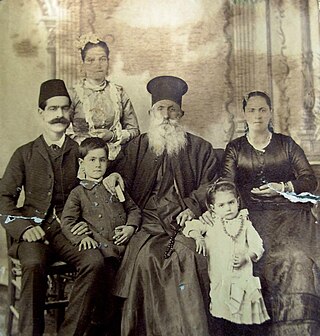Conciliengeschichte, 1855, vol. I, pp.436 ff. "If this account [the Paphnutius story] be true, we must conclude that a law was proposed to the Council of Nicaea the same as one which had been carried twenty years previously at Elvira, in Spain; this coincidence would lead us to believe that it was the Spaniard Hosius who proposed the law respecting celibacy at Nicaea. The discourse ascribed to Paphnutius, and the consequent decision of the Synod, agree very well with the text of the Apostolic Constitutions, and with the whole practice of the Greek Church in respect to celibacy. The Greek Church as well as the Latin accepted the principle, that whoever had taken holy orders before marriage, ought not to be married afterwards. In the Latin Church, bishops, priests, deacons, and even subdeacons, were considered to be subject to this law, because the latter were at a very early period reckoned among the higher servants of the Church, which was not the case in the Greek Church. The Greek Church went so far as to allow deacons to marry after their ordination, if previously to it they had expressly obtained from their bishop permission to do so. The Council of Ancyra affirms this (c. 10). We see that the Greek Church wishes to leave the bishop free to decide the matter; but in reference to priests, it also prohibited them from marrying after their ordination.
Therefore, whilst the Latin Church exacted of those presenting themselves for ordination, even as subdeacons, that they should not continue to live with their wives if they were married, the Greek Church gave no such prohibition; but if the wife of an ordained clergyman died, the Greek Church allowed no second marriage. The Apostolic Constitutions decided this point in the same way. To leave their wives from a pretext of piety was also forbidden to Greek priests; and the Synod of Gangra (c. 4) took up the defence of married priests against the Eustathians. Eustathius, however, was not alone among the Greeks in opposing the marriage of all clerics, and in desiring to introduce into the Greek Church the Latin discipline on this point. St. Epiphanius also inclined towards this side. The Greek Church did not, however, adopt this rigour in reference to priests, deacons, and subdeacons, but by degrees it came to be required of bishops and of the higher order of clergy in general, that they should live in celibacy. Yet this was not until after the compilation of the Apostolic Canons (c. 5) and of the Constitutions; for in those documents mention is made of bishops living in wedlock, and Church history shows that there were married bishops, for instance Synesius, in the fifth century. But it is fair to remark, even as to Synesius, that he made it an express condition of his acceptation, on his election to the episcopate, that he might continue to live the married life. Thomassin believes that Synesius did not seriously require this condition, and only spoke thus for the sake of escaping the episcopal office; which would seem to imply that in his time Greek bishops had already begun to live in celibacy. At the Trullan Synod (c. 13.) the Greek Church finally settled the question of the marriage of priests.
Baronius, Valesius, and other historians, have considered the account of the part taken by Paphnutius to be apocryphal. ...But Baronius is mistaken in seeing a law upon celibacy in that third canon; he thought it to be so, because, when mentioning the women who might live in the clergyman's house--his mother, sister, etc.--the canon does not say a word about the wife. ... Natalis Alexander gives this anecdote about Paphnutius in full: he desired to refute Bellarmin, who considered it to be untrue and an invention of Socrates to please the Novatians. ...Moreover, if it may be said that Socrates had a partial sympathy with the Novatians, he certainly cannot be considered as belonging to them, still less can he be accused of falsifying history in their favour. He may sometimes have propounded erroneous opinions, but there is a great difference between that and the invention of a whole story.
Rufinus ...expressly says that Bishop Paphnutius was present at the Council of Nicaea. ...Lupus and Phillips explained the words of Paphnutius in another sense. According to them, the Egyptian bishop was not speaking in a general way; he simply desired that the contemplated law should not include the subdeacons. But this explanation does not agree with the extracts quoted from Socrates, Sozomen, and Gelasius, who believe Paphnutius intended deacons and priests as well."









